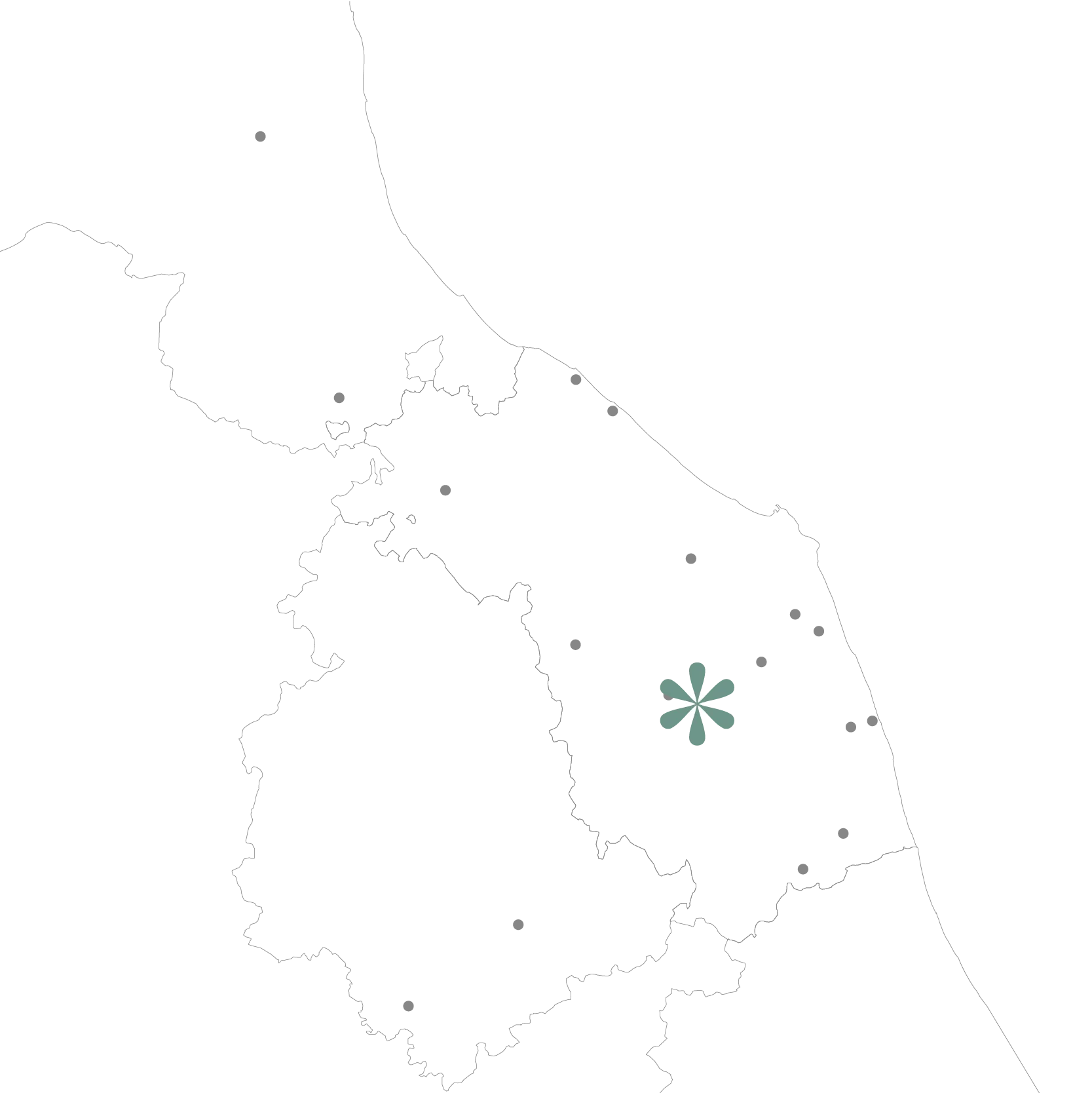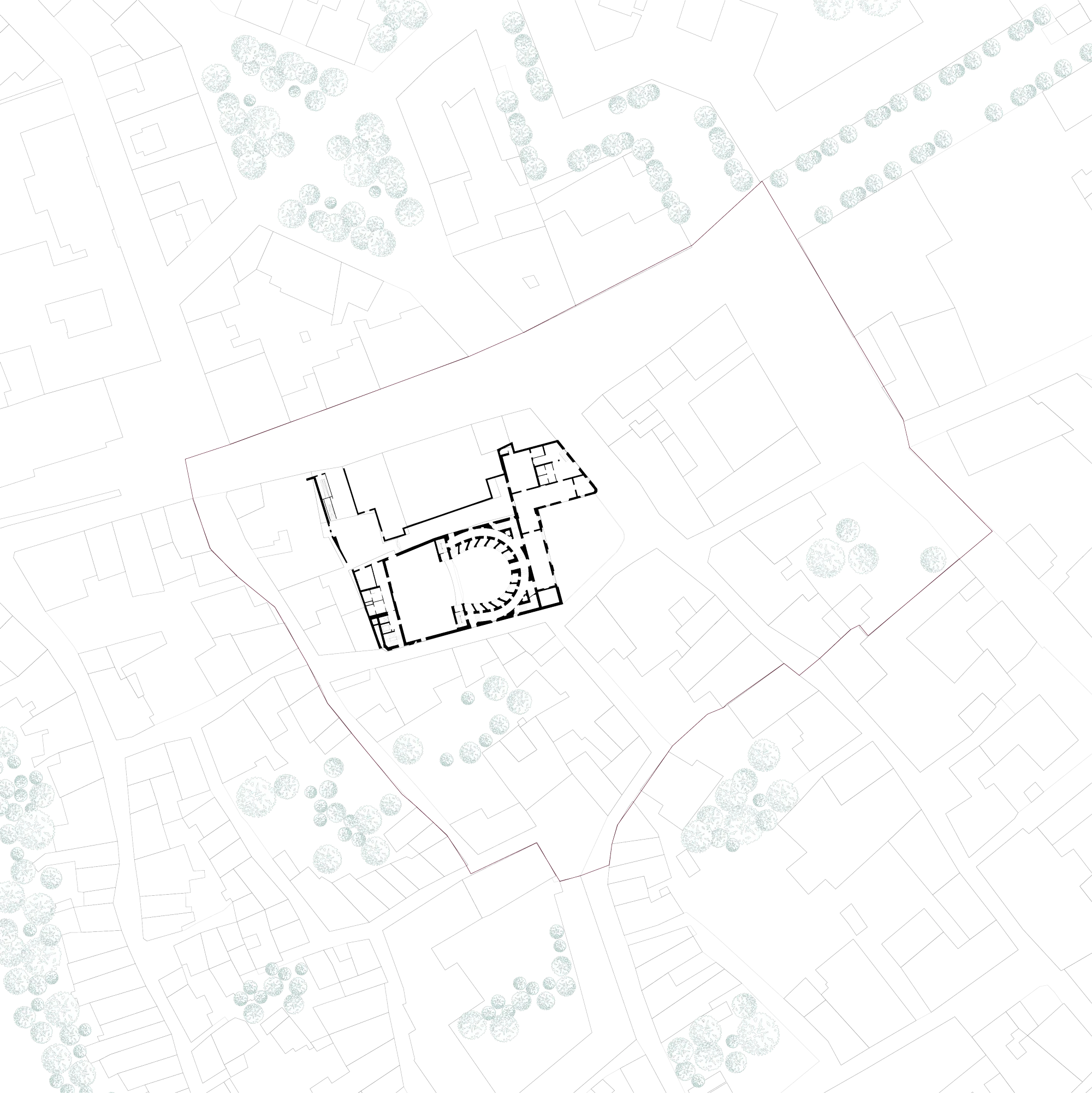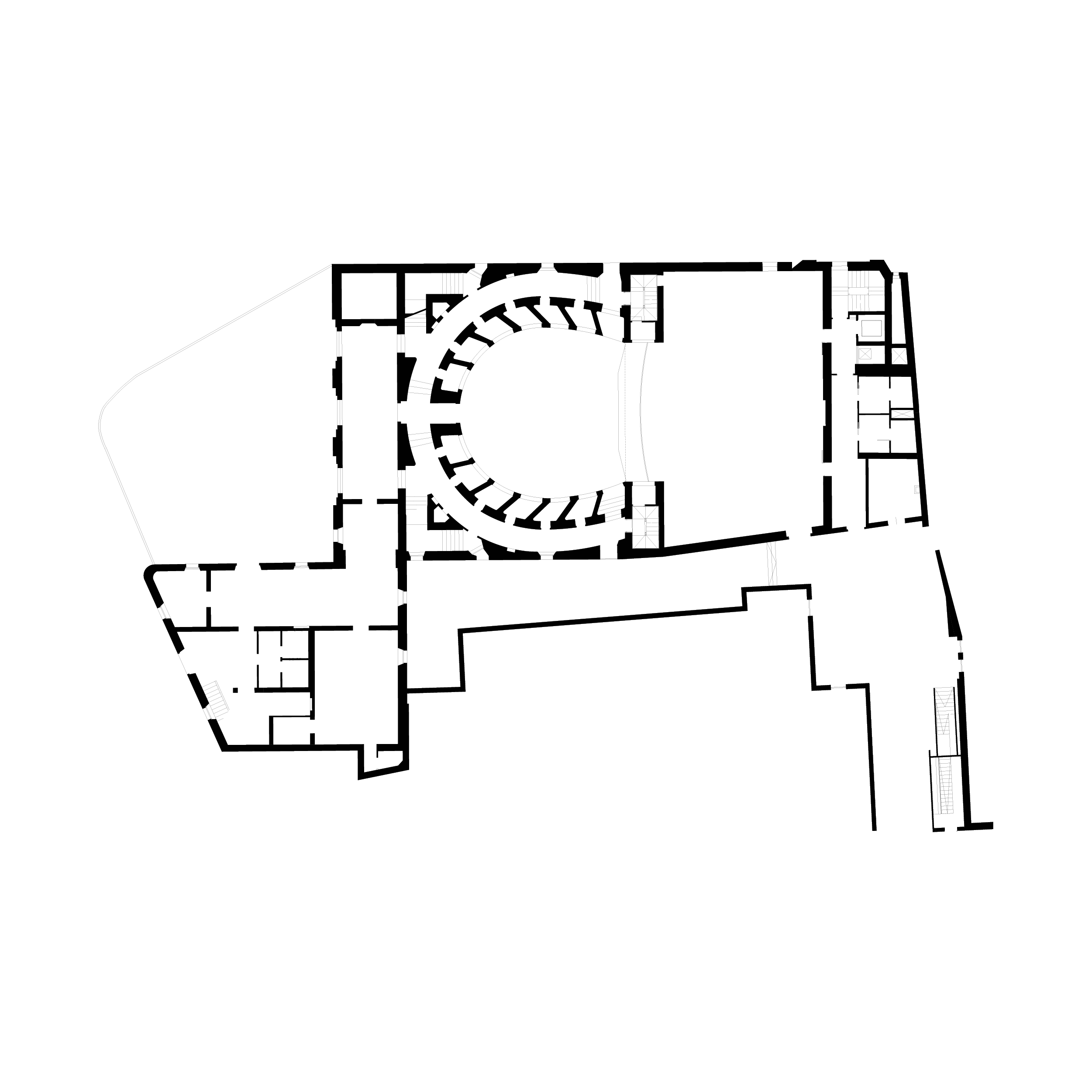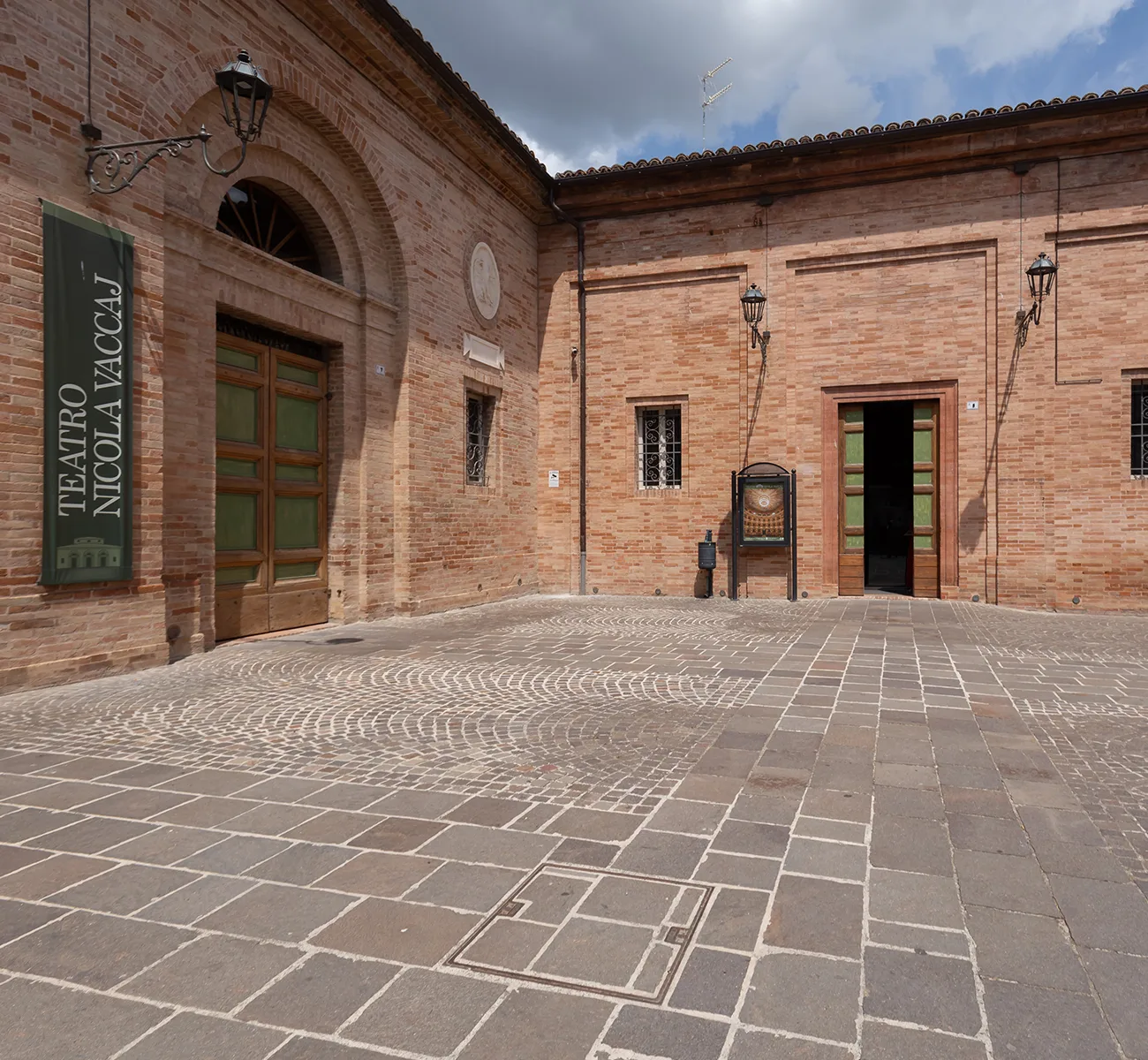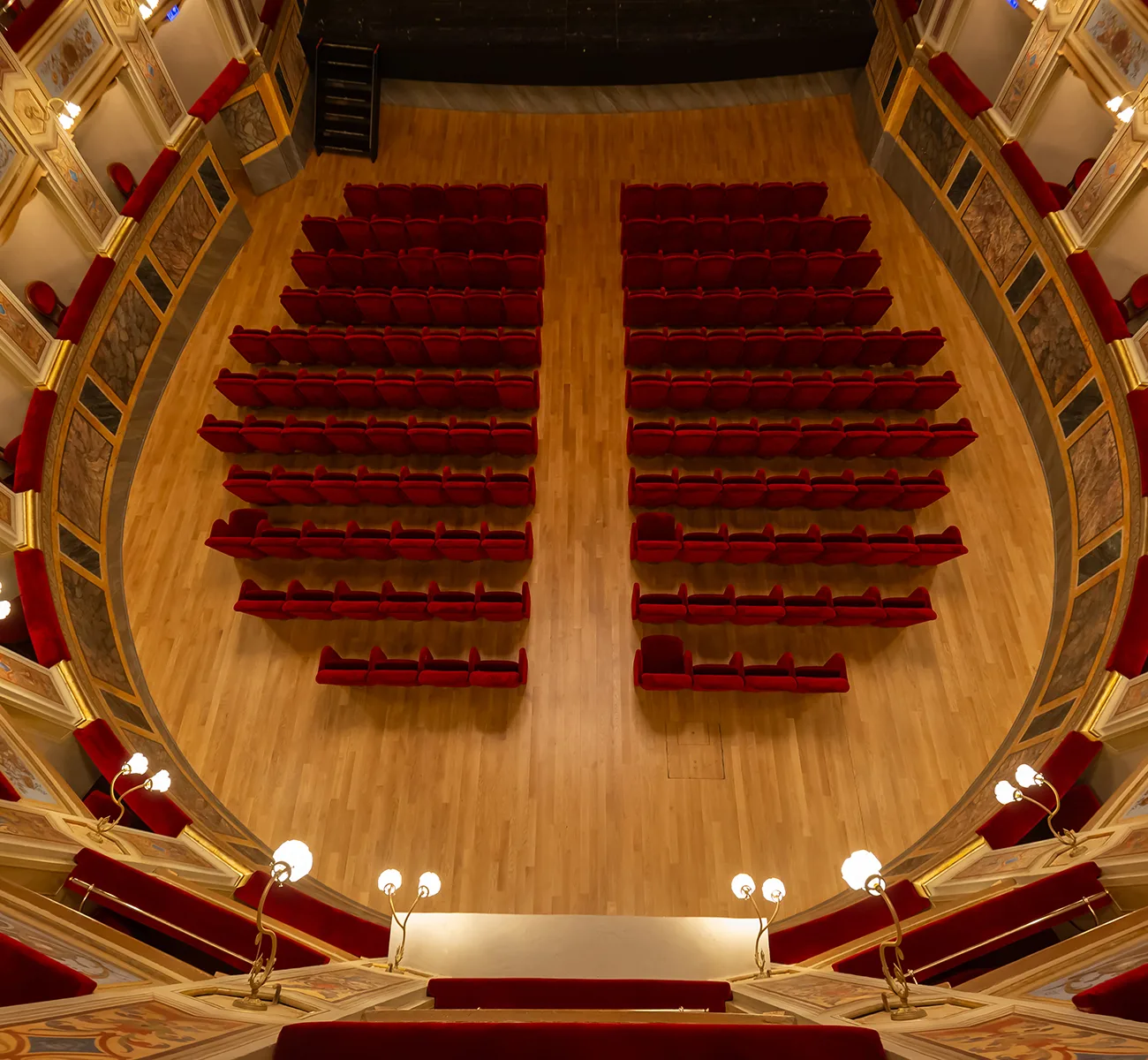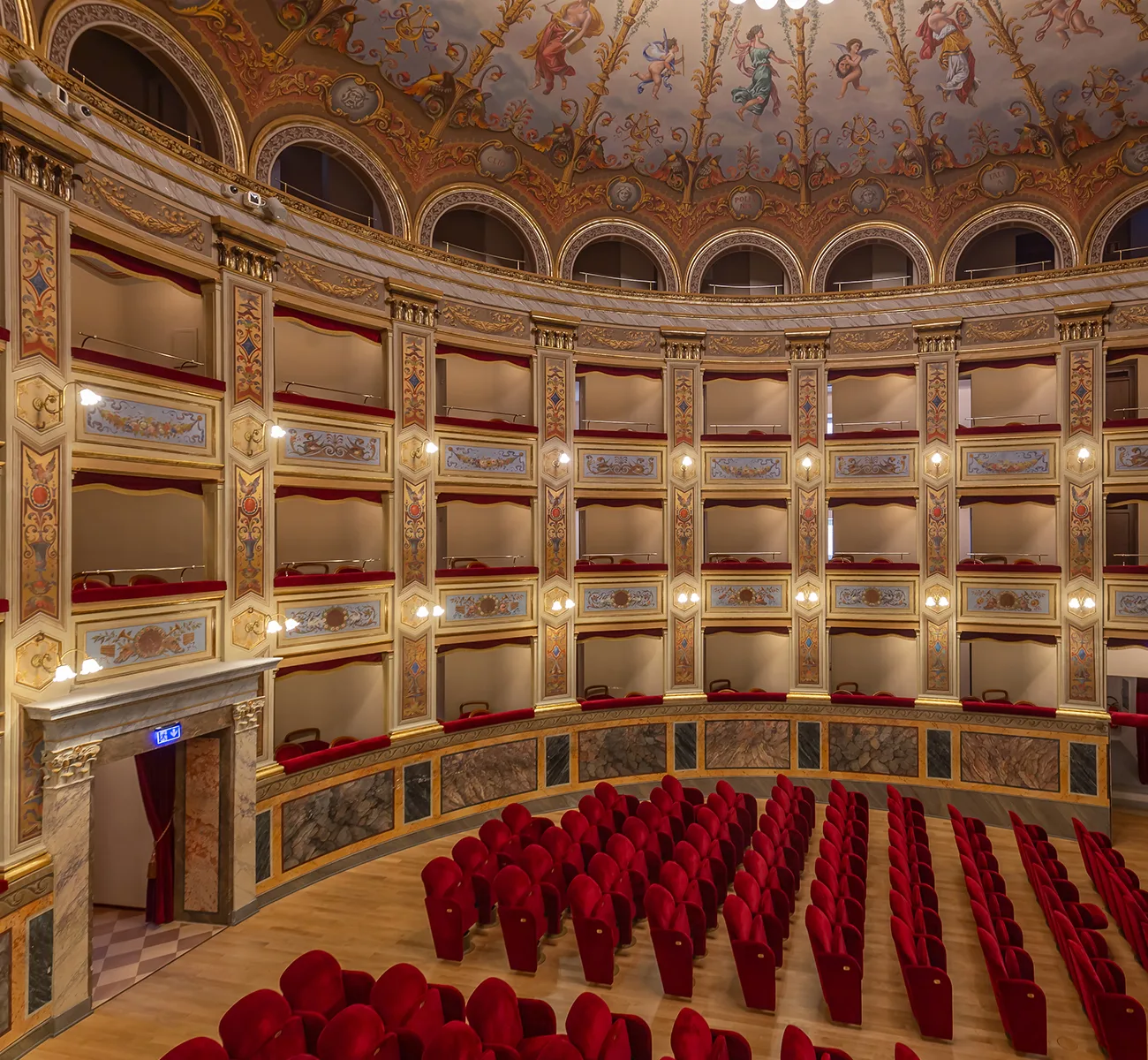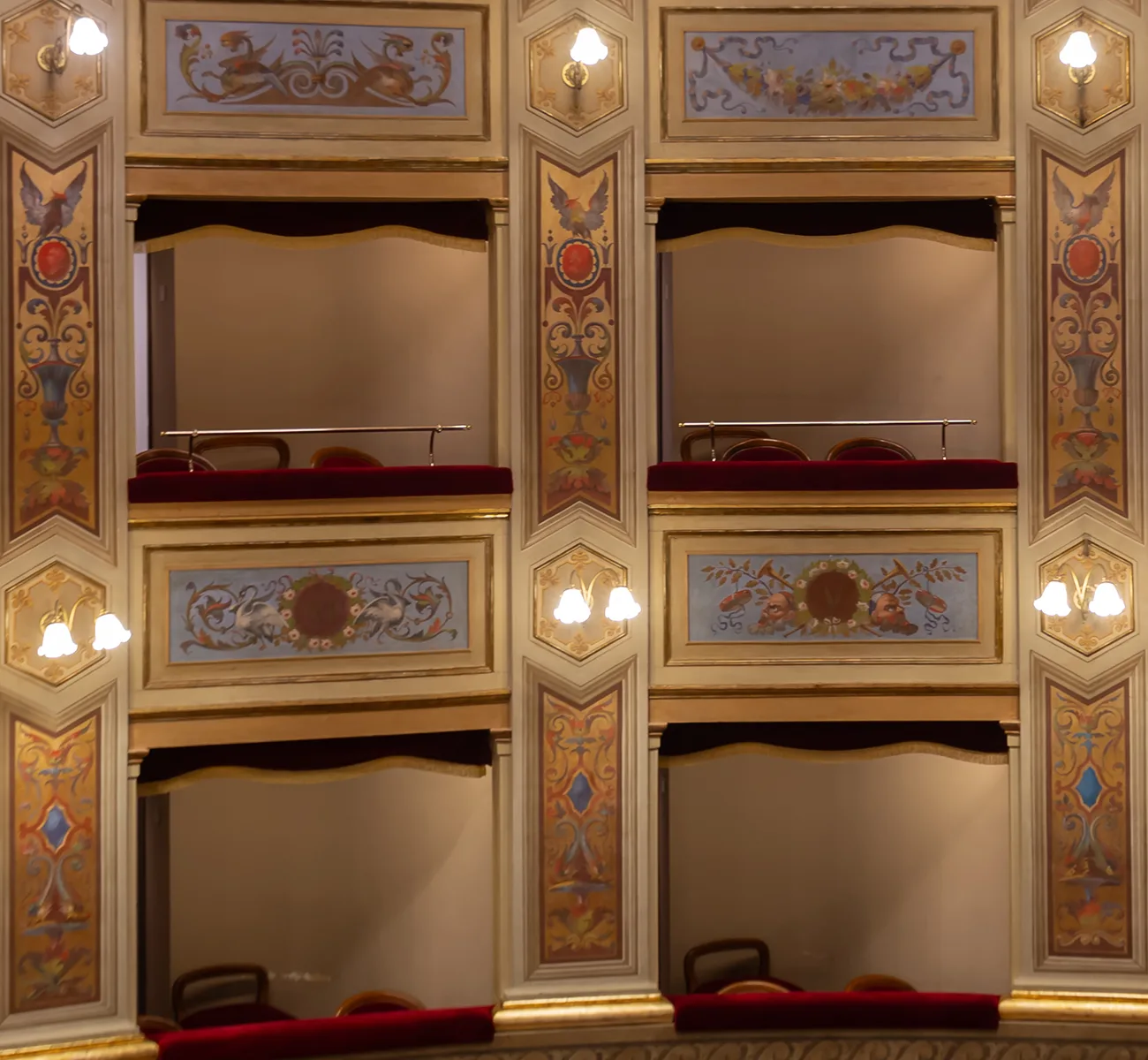The nominated property includes the Teatro Nicola Vaccaj and the surrounding blocks. The the-atre is a standalone monumental structure that blends in with the historic fabric of Tolentino thanks to materials also used widely in the surrounding architecture. The pure volumes of the exterior clearly announce the function that the building serves, making it a magnificent example of architecture par-lante. One of the highlights of the theatre is its well-preserved, historic house curtain painted by the artist and architect Giuseppe Locatelli. This work is reminiscent of Roman wall painting. A Vestal is shown in the centre with, on one side, a faun holding a cornucopia-shaped mirror and, on the other, a rural nymph with a mask. The mirror and the mask are both symbols of theatre and are both a ref-erence to the double figure, a recurring theme in the dramatic arts.
The boxes painted with mythological scenes by Giuseppe Lucatelli were carefully restored, then relocated to the foyer. Some of the medallions frescoed by Luigi Fontana were also restored, which helped recreate the theatre’s original historical and artistic atmosphere.
The Teatro Nicola Vaccaj is managed by AMAT – Associazione Marchigiana Attività Teatrali, to-gether with the local association Compagnia della Rancia, both with close ties to the theatre. Com-pagnia della Rancia is based in Tolentino, where it stages its main productions. The theatre season begins in November and primarily offers a variety of drama performances and musicals. For younger children, the theatre presents a festival entitled “A Teatro con Mamma e Papà” (At the Theatre with Mum and Dad). Throughout the year, the Teatro Nicola Vaccaj serves as a vibrant cultural hub that hosts an array of events, including conferences, concerts and recitals. Artist-in-residence programmes organised by Compagnia della Rancia and other major theatre companies around Italy attract many actors, technicians, and other professionals to Tolentino. National premieres attract audiences from across the Marche region and beyond. Several associations have close ties with the theatre. These include: Compagnia della Rancia, the Tolentino school of acting, the Vaccaj Music Institute, the Tolen-tino Polyphonic Choir, Associazione Musicale N. Gabrielli, educational institutions, dance schools, and UNITRE (university of the third age). The Teatro Nicola Vaccaj is open for visits and guided tours on any day of the week, including weekends and public holidays, subject to booking.
